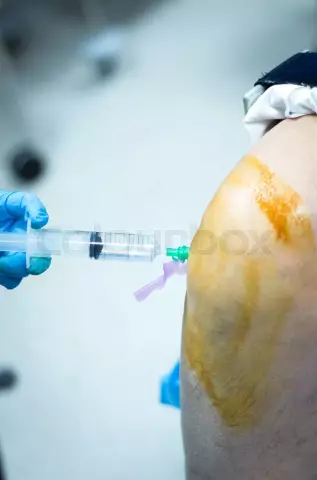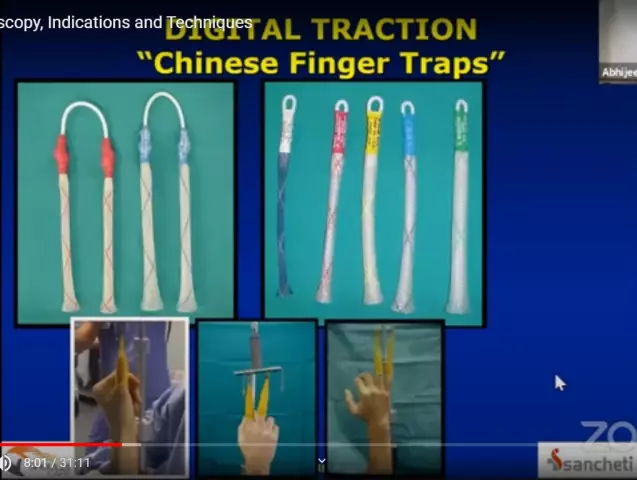- Author Rachel Wainwright [email protected].
- Public 2023-12-15 07:39.
- Last modified 2025-11-02 20:14.
Knee arthroscopy

The knee joint is the part of the musculoskeletal system that is most susceptible to injury and illness. Knee arthroscopy is a method that has now become the gold standard not only in diagnostics.
To understand the importance and revolutionary nature of this method, let's remember what the knee joint consists of. These are the articular surfaces of the bones, between which the menisci of the knee joint are located, and the ligamentous apparatus. This entire structure is enclosed in a joint capsule. Earlier, before the era of the use of arthroscopy of the knee joint, in case of serious damage to the joint, if surgical intervention was required, then it was not possible to perform it otherwise than by cutting the joint capsule. In order to penetrate the deep structures of the joint, it was necessary to gain access to them, also by incision.
As a result, the surgical trauma was quite significant, and after the operation it took a long time for the joint tissues to heal. But the joint is a special organ. In the absence of movement in it, and even in the presence of inflammation, it can lose its functions. Therefore, it was necessary to correlate the risks, and surgery on the knee joint was done only when avoiding it meant knowingly losing the joint.

Knee arthroscopy made it possible to intervene in any joint structure without making an incision. The operating trauma is minimal. The device in the form of a long thick needle pierces the skin, subcutaneous tissue, joint capsule, and can move on without cutting, but moving apart the tissue. The arthroscope, as the device is called, is equipped with a light source and a camera that transmits an image to a monitor. If the intervention is not only diagnostic, but also therapeutic, then the arthroscope is also equipped with a surgical instrument that allows you to carry out all the necessary manipulations.
Now that there is arthroscopy of the knee joint, it is possible to repair any damage in the joint without much risk. Rehabilitation after such an operation takes from an hour to a day, depending on the severity of the intervention, there are practically no complications, general anesthesia is not required. Isn't that a miracle?
Found a mistake in the text? Select it and press Ctrl + Enter.






